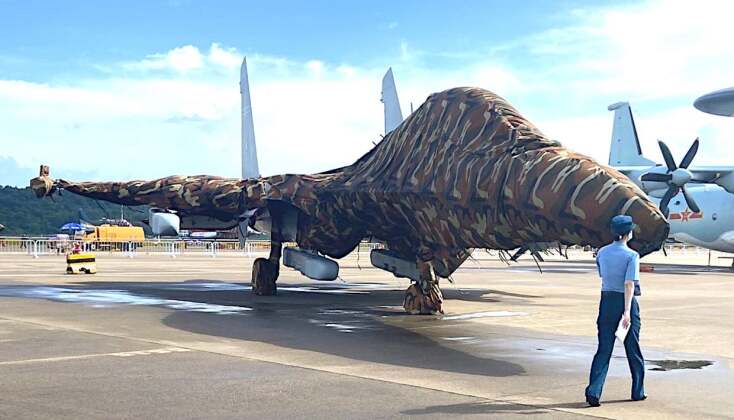After unveiling the J-16D electronic attack jet at the Zhuhai Airshow, China’s People’s Liberation Army has reportedly deployed the new aircraft to an eastern airbase near the Taiwan Strait which remains a leading site of potential conflict amid rising tensions with Taipei and its Western backers. The new aircraft is based on the J-16 heavyweight fighter, and is an almost entirely unique asset with Australia’s being the only other air force with comparable aircraft since acquiring a small squadron of 12 EA-18G Growlers. The J-16D has significant advantages over the Growler, however, with its airframe boasting a much higher endurance and weapons carriage and a far superior flight performance ranging from is operational altitude to its speed and climb rate. While the original J-16 is prized for its advanced avionics, sensors and electronic warfare systems, its high composite airframe which benefits from radar absorbent coatings, and its access to state of the art PL-10 and PL-15 missiles, the J-16D was not designed for air to air combat. It notably sacrifices the infra red search and track system and 30mm cannon of the fighter variant and relies on jamming pods under its wings and fuselage optimised to attack at different radar frequencies. The aircraft can also deploy CM-103, LD-10 and YJ-91 anti-radiation missiles, which are optimised to neutralising enemy air defence and radar sites at standoff ranges.

Electronic attack jets are prized for their ability to soften up enemy air defences preceding assaults by other aircraft or naval units, and can serve as effective force multipliers particularly against targets which rely heavily on ground based air defence. With Taiwan’s ability to even launch a significant portion of its fighters being in serious question, the J-16D is expected to be a particularly useful asset for an assault on the territory as Taipei has relied heavily on ground based air defences such as the Sky Bow system jointly developed with the U.S. The new aircraft is thus expected to play a leading role in the event of a new cross straits war for the suppression of Taiwanese air defences, which makes its deployment to Changxing county in Zhejiang province near the strait a particularly notable development amid concerns regarding an outbreak of hostilities. Beijing and Taipei have been technically in a state of civil war for over 70 years, with both claiming to be the sole legitimate governments of the Chinese nation. Only Beijing is recognised as a legitimate government by the United Nations, however, with all but 15 UN member states officially supporting this position.
